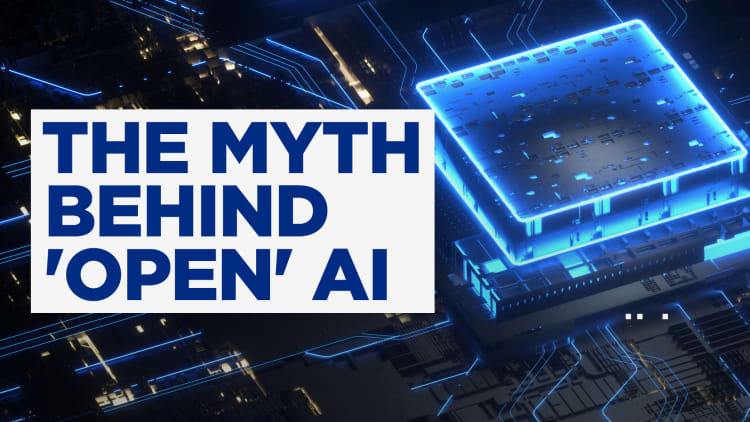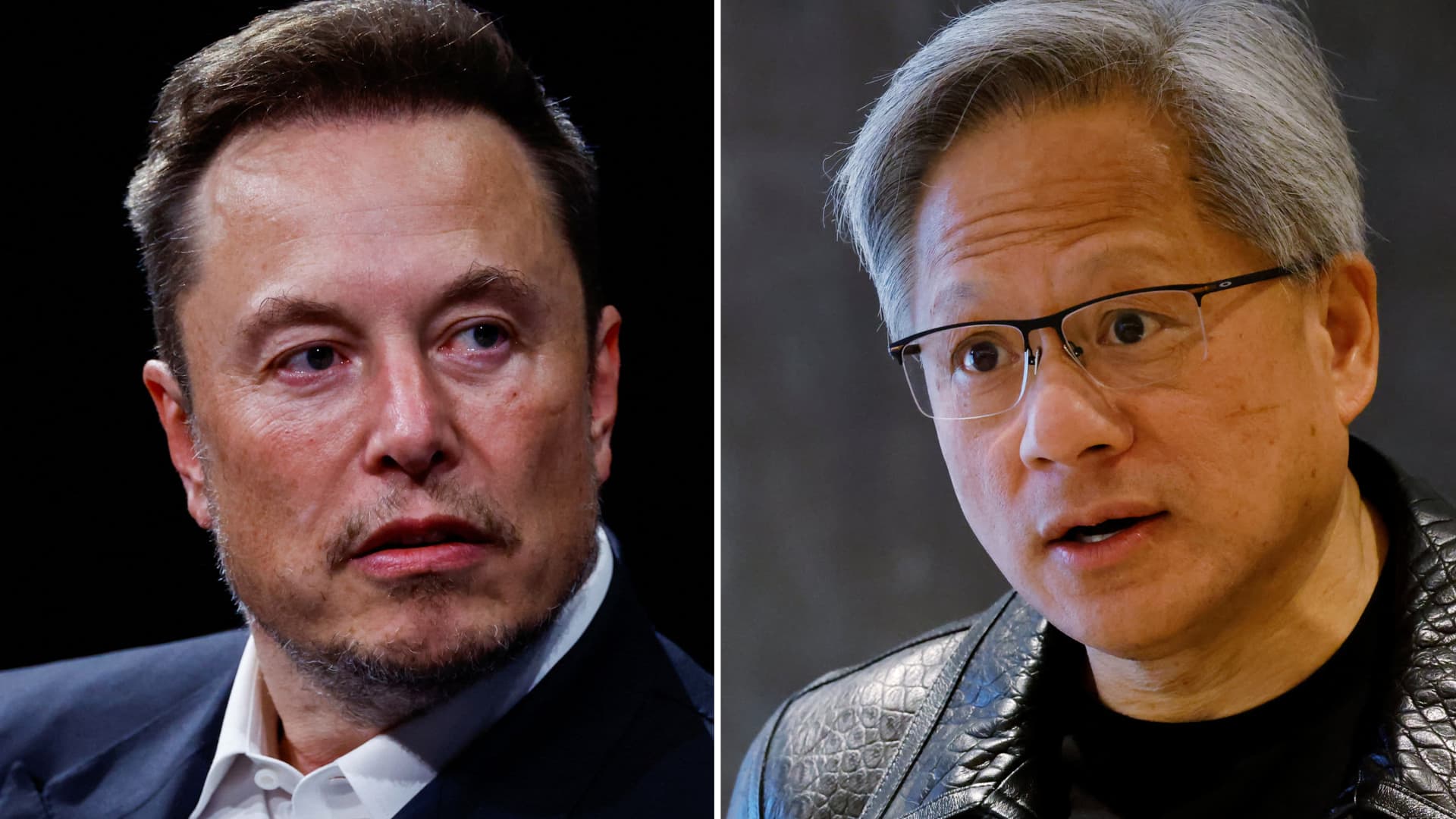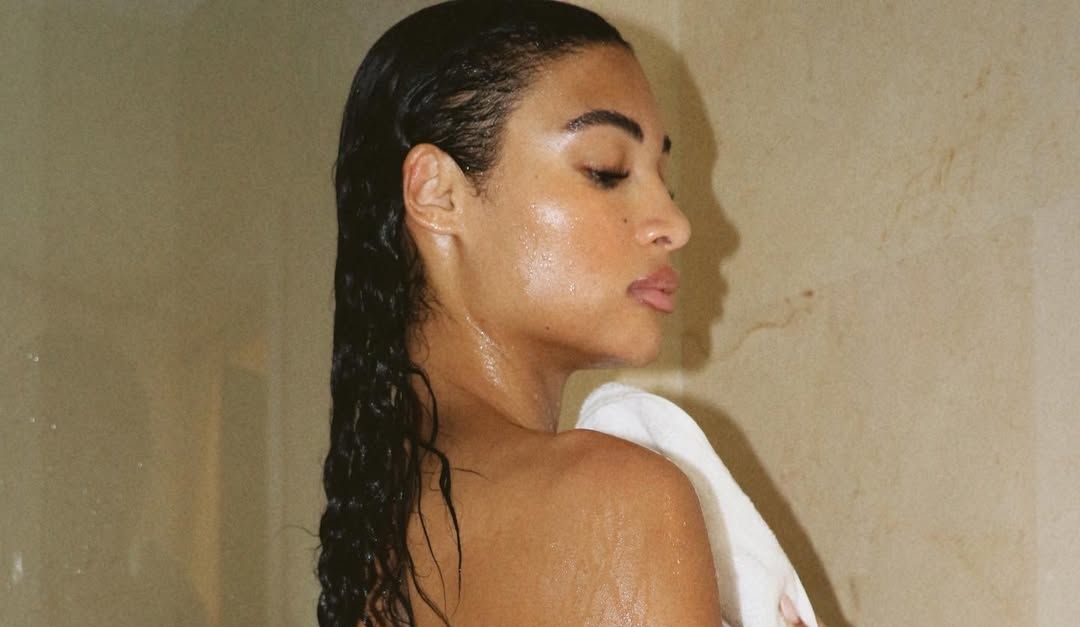Tesla CEO, Elon Musk (L), and Nvidia CEO, Jensen Huang (R).
Reuters
In November 2023, at an all-hands meeting with employees, Nvidia CEO Jensen Huang was asked whether the company would follow the lead of Apple and Disney and suspend its advertising on X due to rising levels of antisemitism and other hate speech on the platform.
X owner Elon Musk said earlier that month that he agreed with a post on the site that accused “Jewish communities” of pushing “hatred against whites.” Numerous brands — Disney and Apple among them — moved quickly to pause their ad campaigns.
Huang’s response was firm but diplomatic, according to people who were listening to the meeting but asked not to be named because they weren’t authorized to speak to the press. He said the chipmaker hadn’t advertised on X in a very long time and had no plans to do so. However, Huang also emphasized that Nvidia would never make public statements against another business.
Left out of Huang’s commentary at the time was any detail regarding Nvidia’s increasing coziness with Musk’s business empire.
Nvidia is seeing soaring demand for its graphics processing units (GPUs) and related hardware and services, a boom that’s lifted the company’s market cap well past $2 trillion. Nvidia’s products, including new accelerator chips, provide computing power for generative artificial intelligence workloads, robotics, research and data center projects.
Revenue in the latest quarter jumped a whopping 265% to $22.1 billion, and last year Nvidia surpassed Intel in total sales.
Musk has made promises that his companies will develop sophisticated AI products, and doing so requires buying up a lot of Nvidia’s technology.
Their cozy relationship was on display this week at Nvidia’s annual GTC conference in San Jose, California. The event, which attracted roughly 16,000 attendees including celebrities like Ashton Kutcher and Kendrick Lamar, had two sessions featuring leaders of xAI, the startup Musk formally revealed in July 2023.
Christian Szegedy, a co-founder and research scientist at xAI who previously worked at Google, spoke at a fireside chat with Bojan Tunguz, a data scientist at Nvidia. Another co-founder and research engineer from xAI, Igor Babuschkin, a veteran of OpenAI and Google, gave an overview of how Musk’s startup is using Nvidia GPUs to help “accelerate training and inference of their Grok model,” referring to the startup’s AI chatbot.
In Nvidia’s press release on Monday announcing the launch of its Blackwell AI chips, Musk was quoted saying, “There is currently nothing better than NVIDIA hardware for AI.”
Musk, who helped create OpenAI before a public split with CEO Sam Altman and other founders, launched xAI to develop AI models and software products.
Meanwhile, his electric vehicle maker Tesla has spent years working on AI software to turn its cars into autonomous vehicles. It’s also now developing the Tesla Bot, or Optimus, a humanoid robot.
While the vast majority of Tesla’s revenue comes from its automotive business, Musk often encourages shareholders to think of it differently. In January he said, in a post on X, “Tesla is an AI/robotics company that appears to many to be a car company.”
Tesla first discussed plans to build a “Dojo supercomputer” at an AI Day presentation in August 2021. The aim for Dojo was to process and train AI models with huge amounts of video and data captured by Tesla vehicles.
‘Boy, do they want a lot more GPUs’
Nvidia is at the heart of its AI efforts. Last August, former Tesla AI engineer Tim Zaman posted on X that a Tesla AI cluster, built using 10,000 of Nvidia’s H100 chips, was ready to go live.
Musk said a post on X in January that while a Dojo supercomputer cost $500 million to build, “Tesla will spend more than that on Nvidia hardware this year.” He added, “The table stakes for being competitive in AI are at least several billion dollars per year at this point.”
Musk said Tesla was “pursuing the dual path of Nvidia and Dojo,” seemingly implying that it’s building Dojo without Nvidia’s technology but using it elsewhere. Musk described Dojo as “a long shot worth taking because the payoff is potentially very high. But it’s not something that is a high probability.”
Oracle founder Larry Ellison, a close friend of Musk’s, former Tesla board member and investor in X, said in December on his company’s earnings call that xAI had secured Nvidia GPUs through Oracle to create the first version of Grok, but that Oracle wasn’t able to meet Musk’s demands.
“Boy, do they want a lot more GPUs than we gave them,” Ellison said. “We gave them quite a few, but they wanted more and we are in the process of getting them more.”
Larry Ellison, chairman and co-founder of Oracle Corp., speaks during the Oracle OpenWorld 2017 conference in San Francisco, California, U.S., on Sunday, Oct. 1, 2017.
David Paul Morris | Bloomberg | Getty Images
While Musk and Huang have a longstanding connection and are now doing more business together than ever, the relationship hasn’t always appeared friendly.
Last June, Musk went so far as to call Nvidia monopolistic, in response to a post on X that accused Nvidia of “spiking the price” of its GPUs, which it could do because of the supply shortage.
Musk wrote that competitive chips were in development, and that “Nvidia will not have a monopoly on large-scale training & inference forever.”
The remarks failed to provoke Huang.
Speaking at The New York Times’ DealBook summit a few months later, Huang credited Musk and OpenAI for the decision to develop Nvidia’s first AI supercomputer, the DGX system, starting back in 2012.
Huang said it took Nvidia about five years to perfect and ship the supercomputer, which he personally delivered to Musk for use by OpenAI.
“Elon saw it, and he goes, ‘I want one of those’ — he told me about OpenAI,” Huang said on stage. “I delivered the world’s first AI supercomputer to OpenAI on that day.”
A spokesperson for Nvidia declined to comment. Tesla and xAI didn’t respond to requests for comment.








